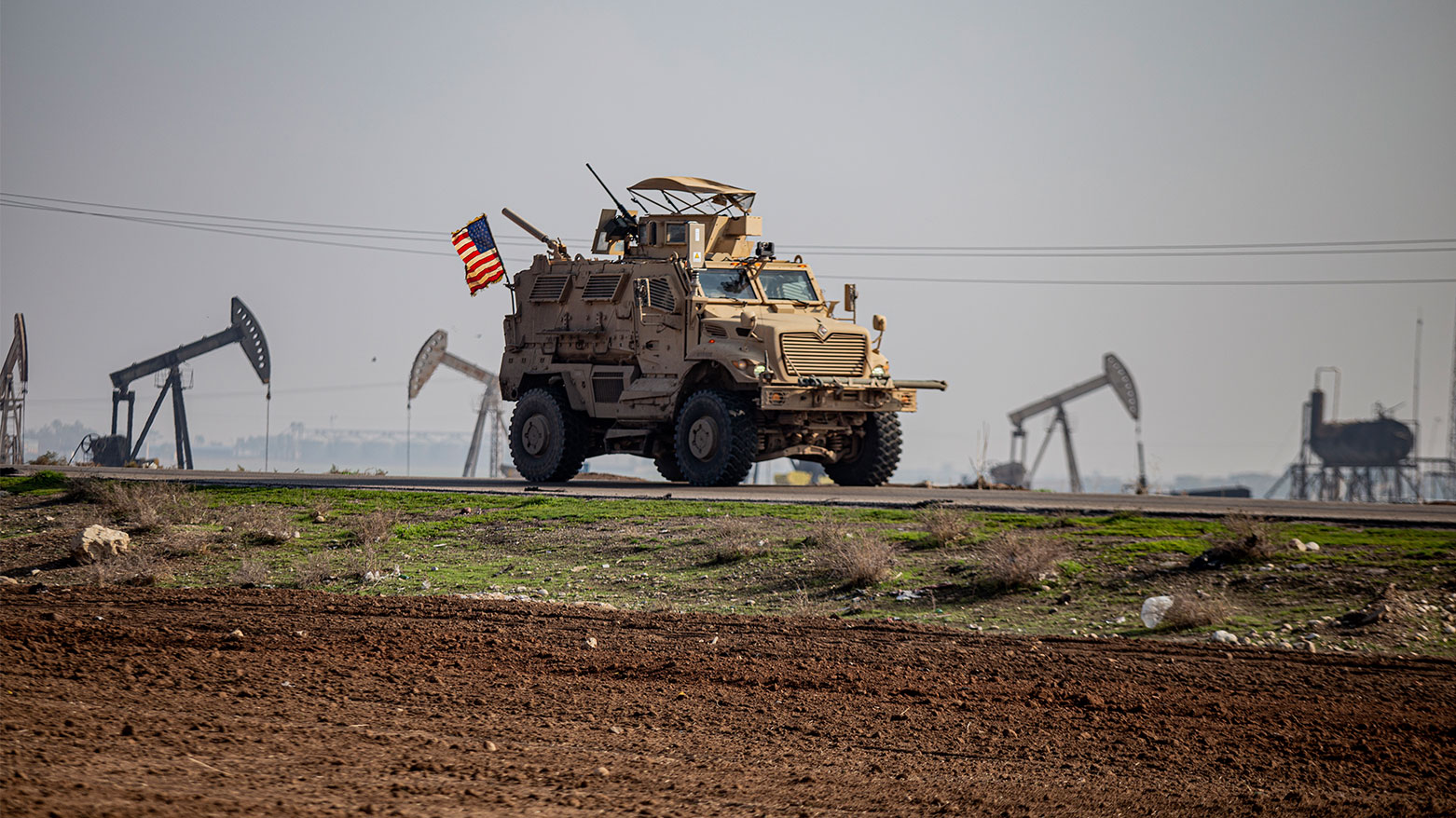U.S.-Led Coalition Expands Military Presence in Rojava
The convoy, heavily guarded by three military helicopters, underscores the coalition's commitment to fortifying its presence.

ERBIL (Kurdistan24) – The U.S.-led coalition has significantly increased its military activity in northeast Syria (Rojava) over the past four days, deploying reinforcements by air and land, conducting live-fire drills, and strengthening its bases in response to escalating security threats.
Military Deployments and Joint Exercises
On Tuesday, a military cargo plane landed at the al-Shaddadi base in southern Hasakah Rojava, carrying advanced military and logistical equipment.
Meanwhile, a convoy of 38 armored vehicles, fuel tankers, and supply trucks crossed from Iraq’s Kurdistan Region through the al-Waleed border crossing into areas controlled by the Syrian Democratic Forces (SDF).
The convoy, heavily guarded by three military helicopters, underscores the coalition's commitment to fortifying its presence.
Simultaneously, another U.S. military aircraft arrived at the Kharab al-Jir base near Rmelan, loaded with anti-aircraft systems, advanced munitions, and electronic warfare equipment, signaling heightened security measures.
Combat Readiness and Live-Fire Drills
Coalition forces, in coordination with the SDF, conducted large-scale military drills at multiple bases.
Live-fire exercises took place at the Al-Milbiyah Regiment in southern Al-Hasakah countryside, involving the use of heavy weaponry against simulated enemy positions.
Additional exercises were held on February 15 and 16 at al-Omar oil field in Deir ez-Zor and the al-Wazir base in northern Hasakah, reinforcing the operational capabilities of local forces.
Strategic Implications and U.S. Commitment
The intensified coalition activities align with broader U.S. objectives in the region. January 2025 saw a substantial buildup of military assets, with 197 supply trucks and 22 cargo aircraft delivering reinforcements, including surveillance equipment, prefabricated defensive structures, and combat vehicles.
Amid persistent security threats, the coalition continues joint training programs with the SDF, enhancing their ability to counter potential insurgent attacks. In January alone, coalition operations led to the elimination of key jihadist figures, reinforcing its role in counterterrorism efforts.
With ongoing reinforcements, joint operations, and counterterrorism missions, the U.S.-led coalition signals its intent to maintain a prolonged presence in Syria, ensuring security in a region marked by geopolitical complexity and persistent conflict.